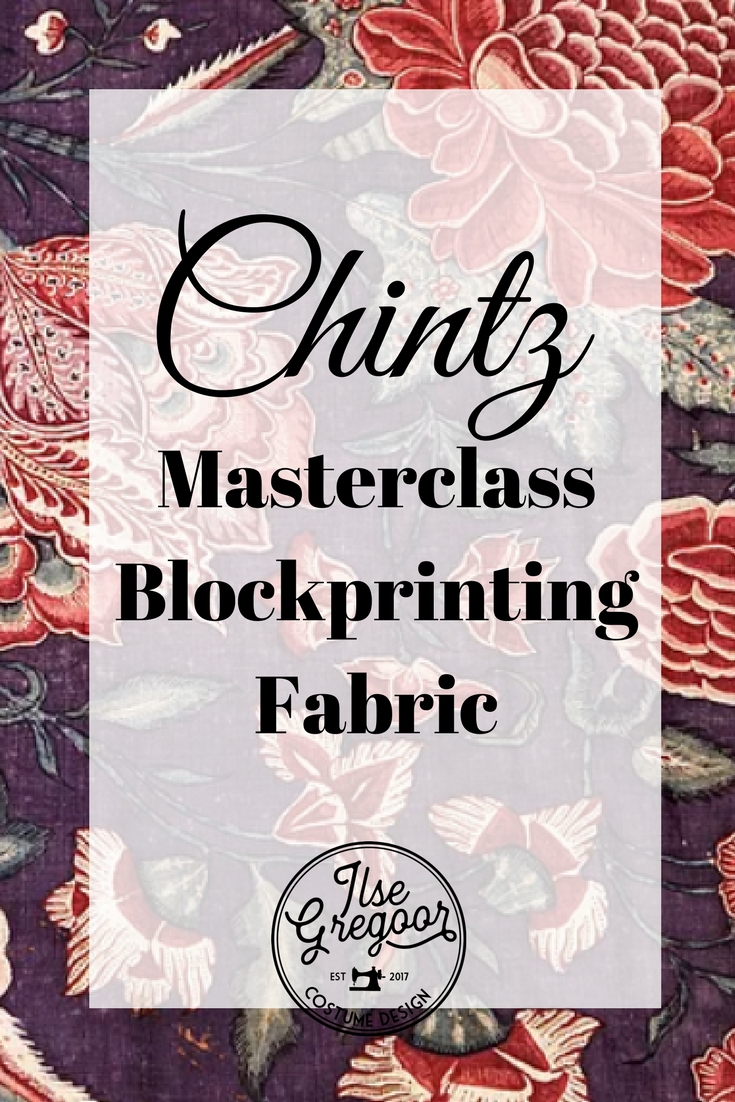Chintz; cotton in bloom during a masterclass blockprinting
One of the most influential fabrics on dutch costume history is chintz. This flowery hand painted cotton fabric was originality from India, but it gained enormous popularity among the lower and middle classes once the East India trading company brought them back to the Netherlands in the seventeenth and eighteenth century. Suddenly they could wear gorgeous patterned fabrics that were previously only available to the rich people who could afford embroidered silks. While in England and France, who had a flourishing wool and silk trade, there was some resistance against these fabrics. The Dutch, where trading was the main industry, chintz were quite popular for their bright colors, and the fact that it was affordable and washable.

The Fries Museum in Leeuwarden had an exposition on Dutch chintz this summer. This lovely exposition showed some of the most beautiful examples of Indian chintz in Dutch clothing, but it also focused on the process of making these fabrics. Making these fabrics took some amazing skill of the Indian craftsmen and it was an incredibly time consuming task with many steps.
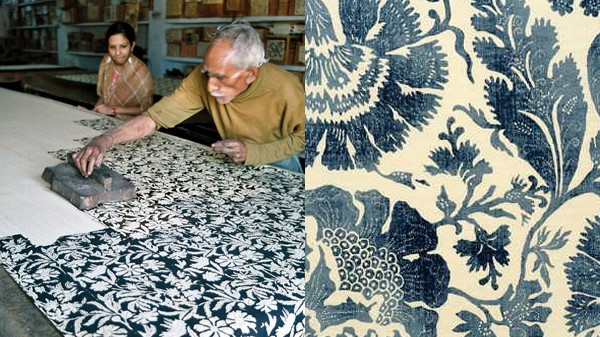
One of the many techniques used during this process is block printing. This is the process of using wooden blocks to print a pattern on fabric. These wooden blocks are carefully carved by master craftsmen. Sometimes multiple blocks are required to achieve one multicolored image.
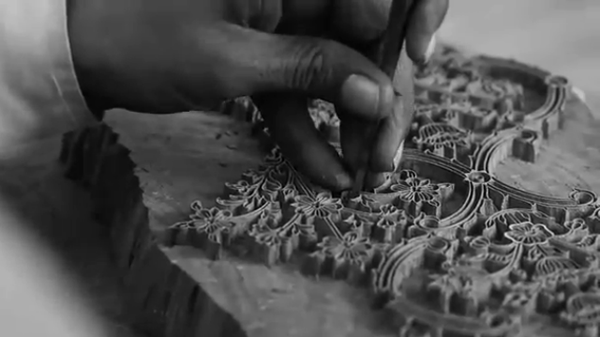
Nathalie Cassée, of Kashmir Heritage, works together with these master craftsmen in India to produce beautiful fair trade hand printed products. In addition to block printing, she also deepened the theory and history of this trade. In India, she realizes her own collection and designs, produces and collects for her company Kashmir Heritage handmade clothing, shawls, fabrics, and blockprints. Recently, she produced the first hand-made chintz reproduction quilt in the Netherlands for over 100 years. This was shown in conjunction with the original 18th Century canvas in the exhibition Sits, Cotton in bloom at the Fries Museum.
Together with the Fries Museum and Craftscounsil Netherlands, she gave a two-day masterclass on block printing on the last weekend of the exhibition Chintz; cotton in bloom. After a guided tour by Gieneke Arnolli (curator of the exhibition and author of the book “Sits: Katoen in bloei”,) to learn more about the history of these hand printed chintz, Nathalie Cassée taught the techniques to make beautiful hand printed fabrics.
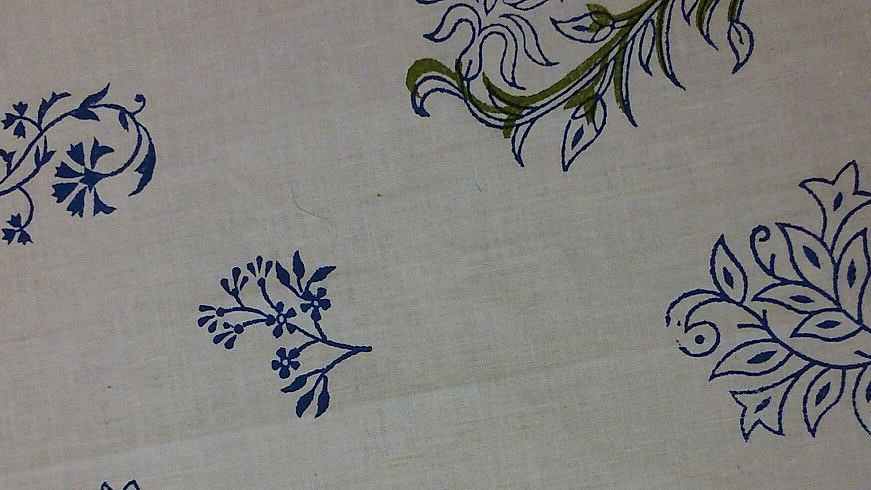
The process of trying to recreate chintz started by printing the outlines of the flowers. Traditionally, these were either red or a blueish black. Mine turned out a little more on the blue side than they should be, but when they are colored in, this should not be too noticeable.
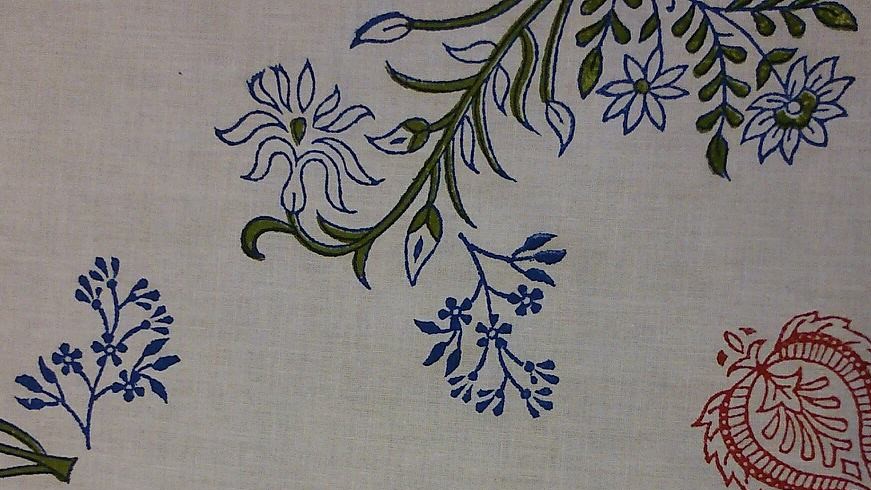
Next, I printed the outlines of the red figures, I chose to feature five pomegranates prominently on the hat, because this was a feature seen in many original Frisian hats I’ve seen. Than I printed the stems and leaves of the flowers with a green color. Green is kind of a different color in chintz, because traditionally, they did not have a green dye. They would first print in indigo blue, and later cover that with a yellow, often kurkuma, to achieve a green color. Yellow was one of the last colors to be applied during the process, so the stage shown here, outlines with green leaves, would not exist in traditional chintz, However, because this fabric is created with modern fabric paints, the order didn’t matter as much as the end result it would provide.
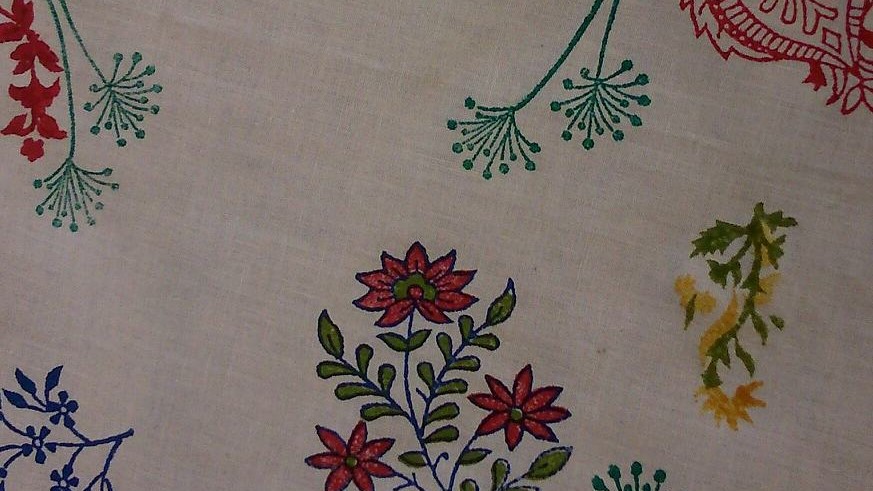
Next I added little flowers, and colored in the bigger flowers with the corresponding blocks. During this process I kept referencing the pictures of the original hats, to work towards the most chintz-like end result. The difficulty was, there was only a set number of blocks to work with, and while some of them were based on traditional designs, there was no one set of blocks to create a chintz pattern. So it was also a process of imagination and creativity to work with the means I had, because it was impossible to recreate an original one on one. However, this is also the part where you have the most freedom, and personal choice and preference. It is always a balance to chose where you have to hold on to the originals, and where you let go and follow your own instincts, but that is also the fun of recreating historic garments.
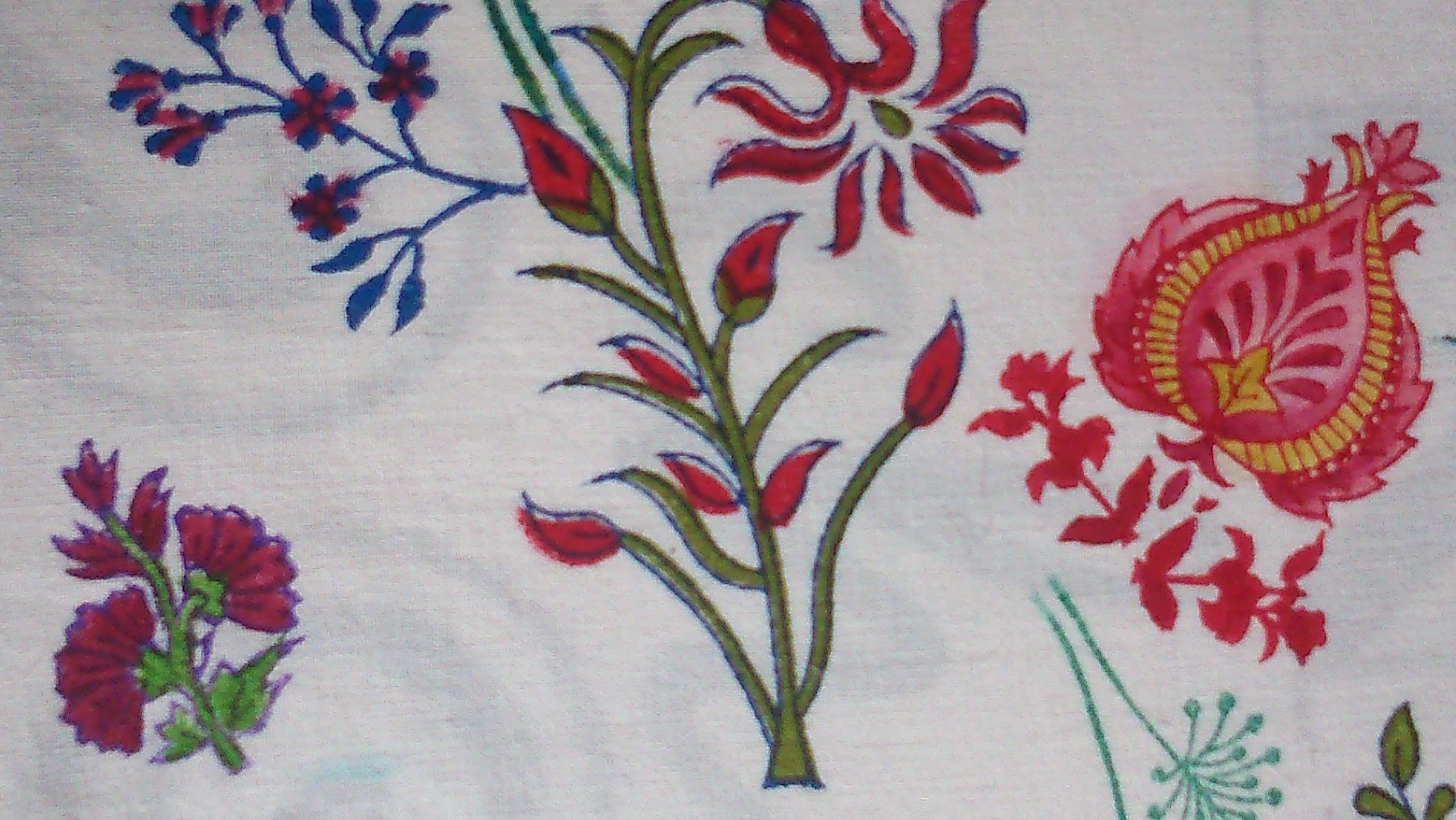
A few of the blocks I used were sets, where you have one block for the outline and one corresponding block for each color, so you can make multi-colored prints. The bigger flower in the middle of this picture was one of those. However, not every block I used was part of a set. Some were just outlines. I therefore chose to go back in and color some figures by hand. the flower you see on the lower left corner, and the stylized pomegranate flower on the right were both hand colored. This is also the point where you can work with subtle color differences to create more depth.
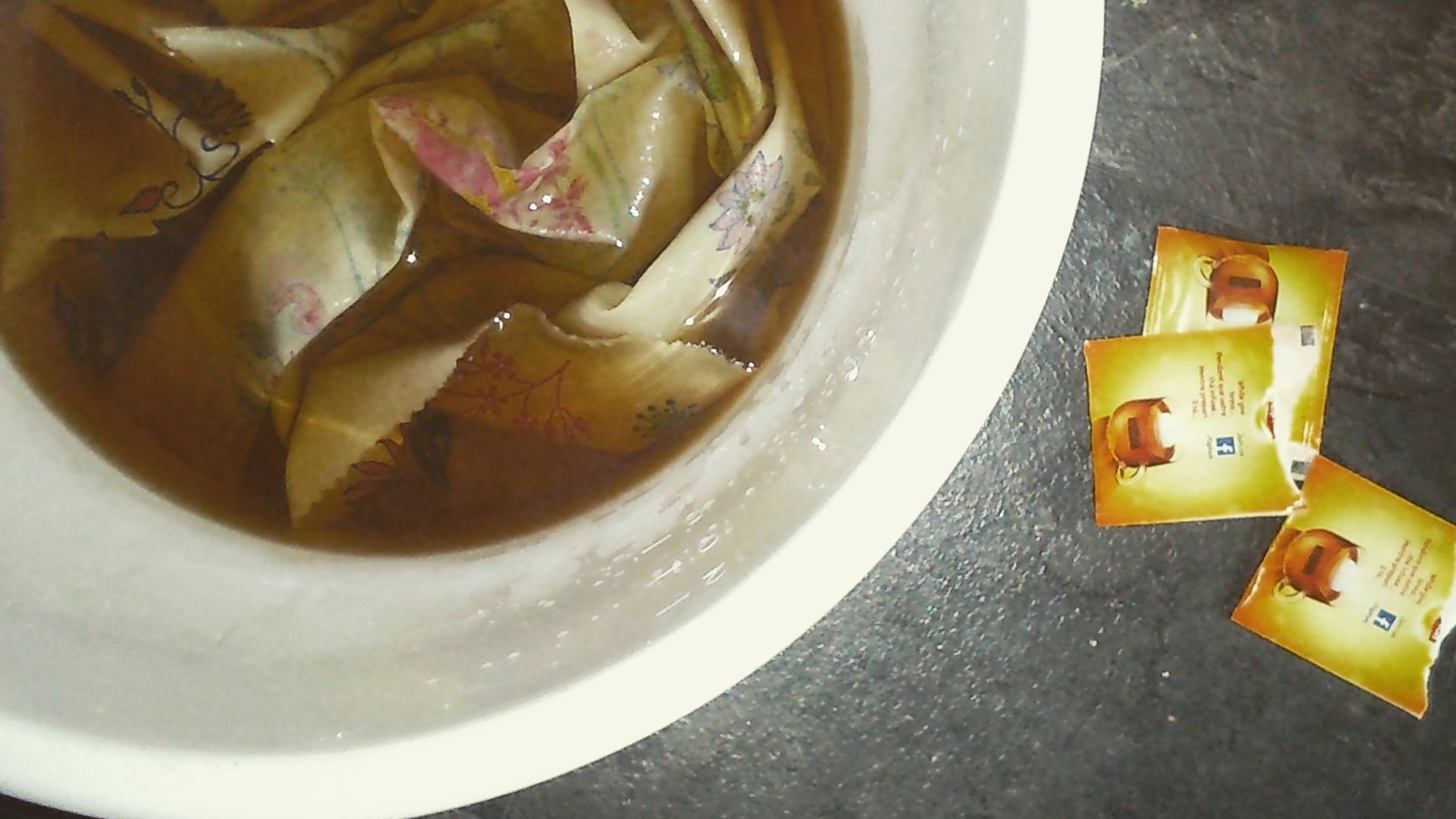
The last step I took, to make the fabric look more authentic was to tea stain it. I made sure to first iron the printed fabric very well, to set the fabric paint. Next I brewed some black tea, and soaked the entire piece in it. The light beige color will give it a warmer and more aged look, which will make the entire hat more authentic looking.
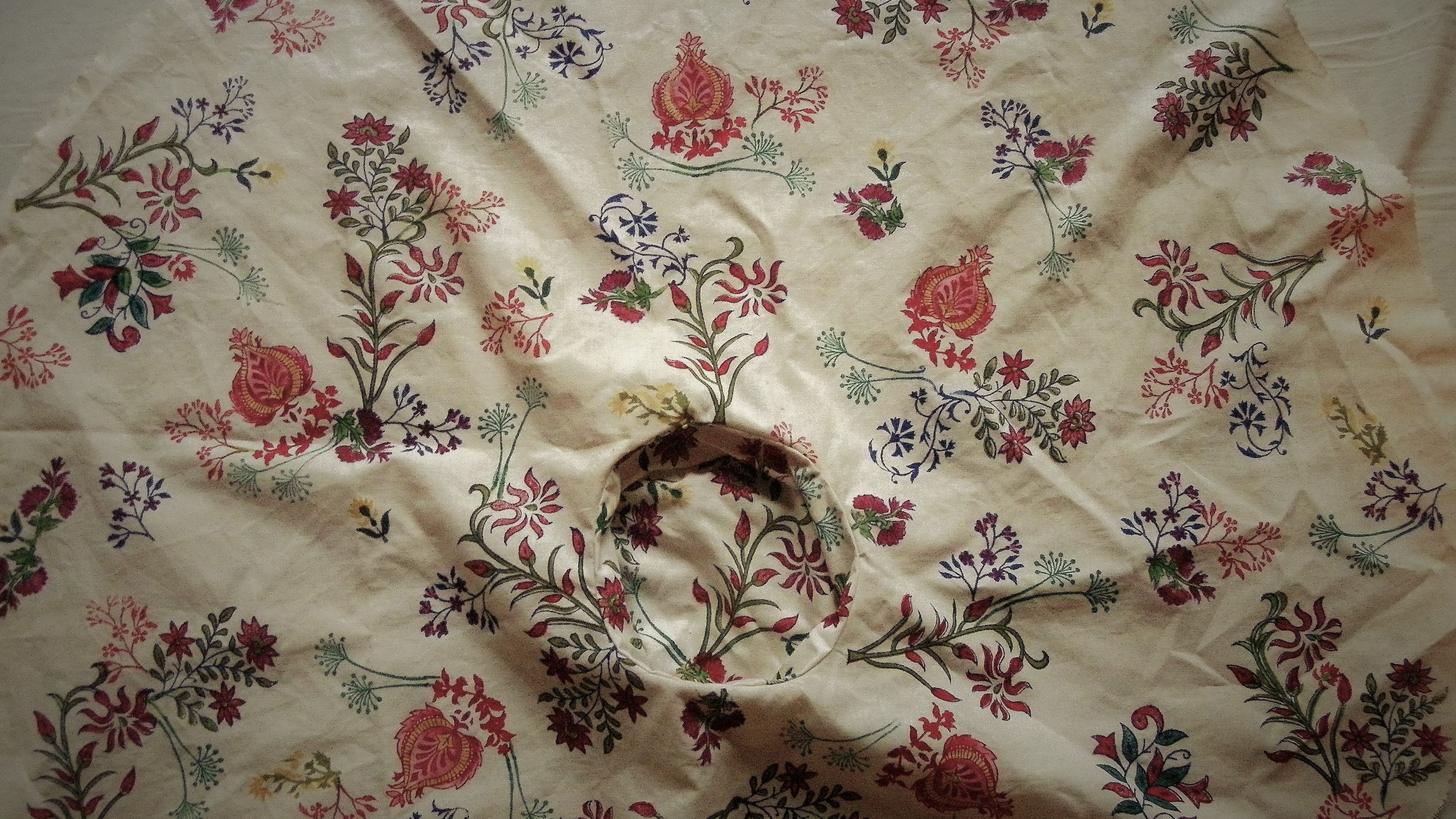
And this is the end result. It is not an exact replica of a chintz fabric, but as a first piece I made using this technique, I’m quite happy with it. The next step is going to be to turn this piece of printed fabric into a big Frisian sun hat, using straw. But more on that later.
